Energy Station: Revealing the Power Exchange System and Driving the New Trend of Electric Vehicles
With the increase in the number of new energy vehicles, the demand for charging and replacing facilities for new energy vehicles has increased simultaneously. Due to the relative shortage of land and power resources in China, we think that with the continuous increase of vehicle ownership,The power exchange mode is expected to be a good supplement to the charging mode, and it has broad medium and long-term development prospects.
Nowadays, the construction and operators of power exchange stations are responsible for the construction and operation of power exchange stations and provide power exchange services to the market. Among them,Power exchange system is the core of power exchange station.
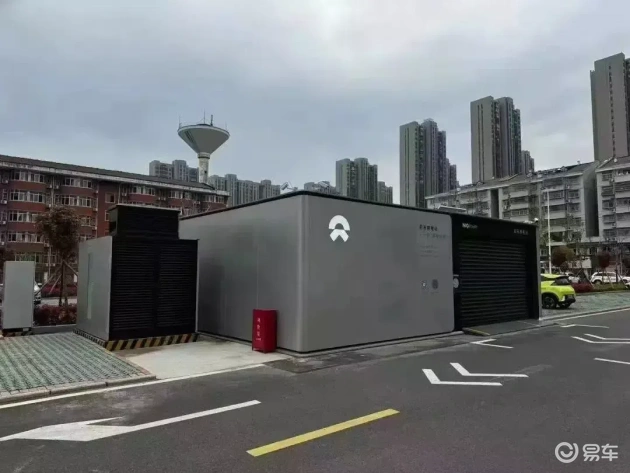
Image source: Wei Lai
So, what is it?"Power exchange system"And?
What is the power exchange system?
Power exchange station refers to a power station that stores, charges and distributes a large number of batteries in a centralized charging station, and provides battery exchange service for electric vehicles in the battery distribution station or integrates battery charging, logistics deployment and power exchange service itself.
The power exchange station mainly includes positioning system, power exchange system, operation and maintenance system, security system and logistics system.The power exchange system is the core of the power exchange station.It consists of a power exchange platform, a stacker, a lifting mechanism, a locking mechanism and a connector.
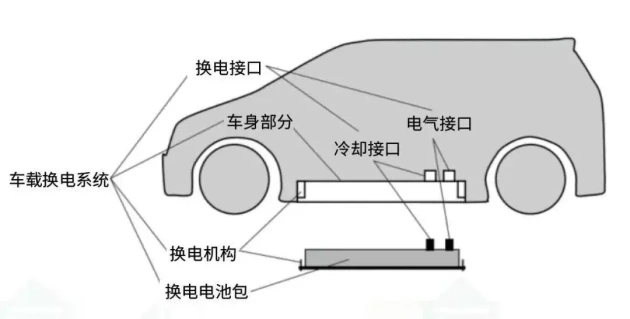
Schematic diagram of vehicle-mounted power exchange system
The power exchange system is also an important part of the power exchange technology of electric vehicles.Its main function is to unload the battery from the electric vehicle, transport it to the battery compartment for charging, and at the same time obtain the fully charged battery from the battery compartment and install it on the electric vehicle to complete the power replacement work.
Composition of power exchange system
The power exchange system consists of the following key parts:
1. Power-changing robot:This is one of the most important equipment in the power exchange system, which is responsible for the disassembly and installation of the battery.
2. Add unlocking platform:Realize the replacement and unlocking functions of vehicle battery pack.
3. Stacker:Used to transport and exchange batteries.
?4. Lock the link component:Realize the rapid and automatic locking and separation of the power battery and the car body.
5. Quick-change electrical connector, liquid-cooled connector and water connector:These connectors play a key role in the process of power exchange, ensuring the fast connection and stable power supply of the battery.
Classification of power exchange system
According to different functions, the power exchange system can be divided into the following ways:
?1. Vertical power exchange of chassis:Dismantle the original battery pack from the lower part of the chassis and replace it with a new battery pack. It is suitable for cars, SUVs, MPVs and light logistics vehicles, with a high degree of automation, but a new fixed power station needs to be built.
?2, chassis side for electricity:The battery is fixed in the form of a frame, and the operation is complicated and long.
?3, box for electricity:Battery compartment replacement is suitable for scenes that require less space and time.
Application Scenarios of Power Exchange System
The power exchange system is mainly used in commercial vehicles and private passenger cars.Especially in the high-frequency use scene that needs rapid recharge, the effect is remarkable.For example, the energy management system of heavy trucks can improve the efficiency of power exchange, optimize energy utilization and reduce operating costs through intelligent and automatic means.
- ?Shared electric vehicle field:As the new favorite of urban short-distance transportation, shared electric vehicles provide a reliable charging solution for them. By arranging power exchange stations in different areas, users can conveniently park electric vehicles on the stations for battery replacement, thus realizing long-term use.
- Logistics distribution field:In the field of logistics and distribution, electric vehicles have become an important means of transportation. The application of power exchange mode provides an efficient and convenient charging scheme for logistics distribution vehicles. Logistics enterprises can replace batteries at their own distribution sites or partner’s power exchange sites without waiting for charging time, which improves distribution efficiency.
- ?Travel and tourism field:In tourist attractions or city power exchange stations, visitors can easily change batteries and continue their journey. This not only reduces the charging time of tourist vehicles, but also avoids the embarrassing situation that they can’t continue driving because of insufficient batteries. At the same time, the power exchange mode avoids the trouble of tourists looking for charging piles during the tour and improves the convenience of travel.
- ?Urban public transport field:Electric buses, electric taxis and other vehicles can replace batteries at bus stops or special power exchange stations, which can quickly restore power and improve operational efficiency. At the same time, the power exchange mode solves the problem of the shortage of charging pile resources in the traditional charging mode, and provides better service for public transportation.
Advantages and disadvantages of power exchange system
The main advantage of the power exchange system is that itEfficiency and convenience.Compared with the traditional charging method, the process of changing power is usually completed in a few minutes, which greatly shortens the charging time of electric vehicles. In addition, the power exchange system can also be standardized, so that different brands and models of electric vehicles can share the same set of power exchange facilities.And the utilization rate and compatibility of facilities are improved.
First, advantages:
Quick recharge:The process of power exchange is usually completed in a few minutes, which improves the efficiency of energy supply.
Battery maintenance:Through centralized charging and unified management, it is helpful to prolong battery life.
Boost battery recovery:Standardized batteries are easy to recycle, reduce recycling costs and improve resource recycling efficiency.
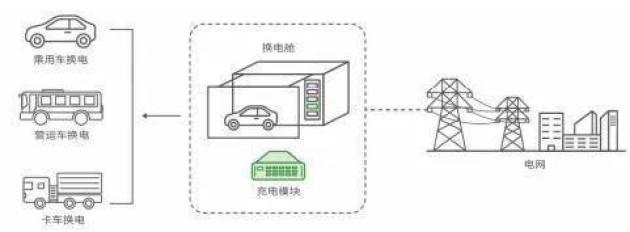
Image source: Futaijie Testing Innovation Center, the picture shows the new energy vehicle power exchange system.
Second, the shortcomings:
Technical standards are not uniform:The battery specifications and interfaces of different car companies are different, which makes it difficult to use the power exchange equipment universally and increases the construction and operation costs.
High construction cost:The construction cost of power exchange station is high, including equipment purchase, site construction and power facilities transformation.
Impact of technical iteration:With the development of battery technology, the advantages of battery replacement technology may be weakened, such as the development of overcharge technology may shorten the charging time.
Technical requirements of power exchange system
The realization of power exchange system needs high-precision mechanical arm, intelligent identification system and efficient battery management system and other technical support. The integration of these technologiesIt ensures the safety, rapidity and convenience of the power exchange process.
The technical requirements of the power exchange system mainly include the following aspects:
?Security:The design and manufacture of power exchange system shall meet the following requirementsReplace the battery pack safely, quickly and reliablyRequirements. In the design life cycle, the system should have the functions of electricity, communication, thermal management, etc. that meet interoperability.
?Electrical connection:The electrical connection of the power exchange system shall meet the following requirementsPower transmission, information interaction and security protectionBasic functional requirements of.
Communication protocol:The power exchange system shallIt has the function of connecting with the vehicle electric platform.The system should support a variety of communication protocols, including but not limited to CAN bus communication protocol, to ensure the accurate transmission of battery information, relay information, energy estimation and other data.
Interoperability:Power exchange systemShould be interoperable,Ensure that different brands and models of battery boxes are compatible. This includes the overall size of the battery box, the upper interface of the battery box, the lower interface of the battery box, the power exchange interface of the vehicle bracket and other technical requirements.
Maintenance and replacement requirements:The consumable parts in the power exchange system should be in the vehicle instruction manual.Clearly mark its scope, maintenance and replacement requirements.During the maintenance period specified by the vehicle manufacturer, the easily worn parts should not fail.
Thermal management and fault diagnosis:Power exchange systemShould have thermal management function,Ensure the temperature control of the battery during operation. In addition, the system should also have fault diagnosis function, which can monitor and report the battery status, relay status, energy estimation and other information in real time to ensure the stable operation of the system.
Standardization and compatibility:Power exchange systemShould follow the relevant national standards and industry standards,Such as GB/T 37133 and related standards and specifications, to ensure the standardization and compatibility of the system.
By meeting these technical requirements, the safety, reliability and interoperability of the power exchange system can be ensured, and the use experience and operation efficiency of electric vehicles can be improved.
Challenges faced by power exchange system
However, the power exchange system also faces some challenges, such asThe investment cost is high and the battery standardization is not uniform.Problems such as the following aspects:
1, the construction cost is high:The construction and maintenance of power exchange station need a lot of capital investment, including equipment purchase, site lease, personnel training, etc. In addition, with the continuous expansion of the electric vehicle market and the increasing number of models, the power exchange station needs to be continuously upgraded and expanded to meet the needs of different brands and models, which further aggravates the cost pressure.
?2. Limited penetration rate:At present, the number of stations that can provide power exchange services in the market is relatively small and unevenly distributed, which leads many electric vehicle owners to find suitable power exchange stations when they need to charge, thus affecting their car experience.
3, technical standards are not uniform:The power exchange standards among different car companies are not uniform, which leads to the limited popularization and application scope of power exchange stations. If the structure of the vehicle, the shape and packaging of the battery are not unified, it is impossible to change the electricity.
4, security issues:The power battery will be attenuated, and if the battery state cannot be guaranteed to be unified, it will bring security risks. In addition, how to ensure the safety of the battery in the process of power exchange is also a problem that needs to be solved.
5. Operation mode and charging standard:Reasonable operation mode and charging standard are the key to the comprehensive promotion of the whole power exchange mode. At present, these problems have not been well solved.
6. Insufficient policy support:Although the government has played an important role in promoting the construction of charging facilities, the promotion of power exchange system and mode needs more policy support and market guidance.
Future development trend of power exchange system
The future development trend of power exchange system mainly includesTechnological innovation, policy support, business model innovation and extensive application scenariosThe expansion of. ?
I. Technological innovation
1, battery standardization design:With the progress of battery technology, the battery will be standardized in the future, and different brands of new energy vehicles will adopt unified battery specifications and interfaces, which will greatly promote the popularization of power exchange mode, reduce operating costs and improve service quality.
2, technological innovation and intelligent management:With the development of technology, the power exchange system will become more intelligent and efficient. Through the Internet of Things (IoT) and artificial intelligence (AI) technologies, the power exchange station will be able to monitor the battery health status in real time and optimize the energy storage and power exchange process.
Second, policy support
1. Government policy support:The government will continue to increase its support for new energy vehicles, and introduce more policies to support the power exchange mode, including subsidies and tax incentives, so as to encourage enterprises to invest in research and development and promote the power exchange mode.
2. Infrastructure construction:The government will increase investment in the construction of charging facilities and power exchange stations to provide strong support for the development of power exchange systems.
Third, diversification of business models
The power exchange industry is not limited to providing battery replacement services.Related enterprises will explore more value-added services.These may include cooperation with public transportation and logistics industries, or providing comprehensive services such as car cleaning and vehicle inspection. This diversified business model can not only increase revenue sources, but also enhance customer stickiness.
Fourth, the expansion of extensive application scenarios
1, the field of electric vehicles:The power exchange system can prolong the battery life and promote the popularization of electric vehicles.
2. UAV field:The power exchange system can prolong the life of the UAV, quickly resume the task and reduce the operating cost.
3. Smart home and standby power supply:The power exchange system can also play a role in smart home and standby power supply.
In a word, the future development prospect of power exchange system is broad, and technological innovation, policy support and business model innovation will continue to promote its development.And is widely used in more application scenarios.
Digital monitoring and operation and maintenance solution of charging and replacing power station
9.1. Equipment Configuration and Networking Scheme
On-site box substation equipped withAnkerui microcomputer protection, harmonic detection, multifunctional instrument, wireless temperature measurement, reactive power compensation controller and intelligent capacitor compensation device.. These devices are connected to the intelligent gateway ANet-2E4SM through RS485 bus, and uploaded to the operation and maintenance management platform of Weilai charging and replacing power station through 4G network. The specific equipment configuration and networking structure are shown in the figure.

Configuration of Intelligent Device in Box Substation of Charging and Replacing Power Station
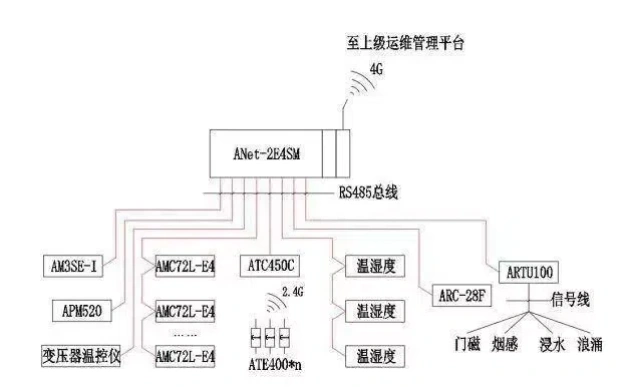
Structure diagram of field equipment networking
9.2. Equipment Selection Table
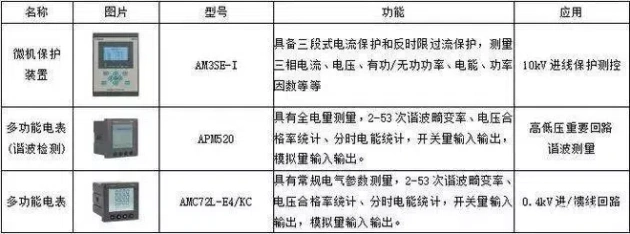
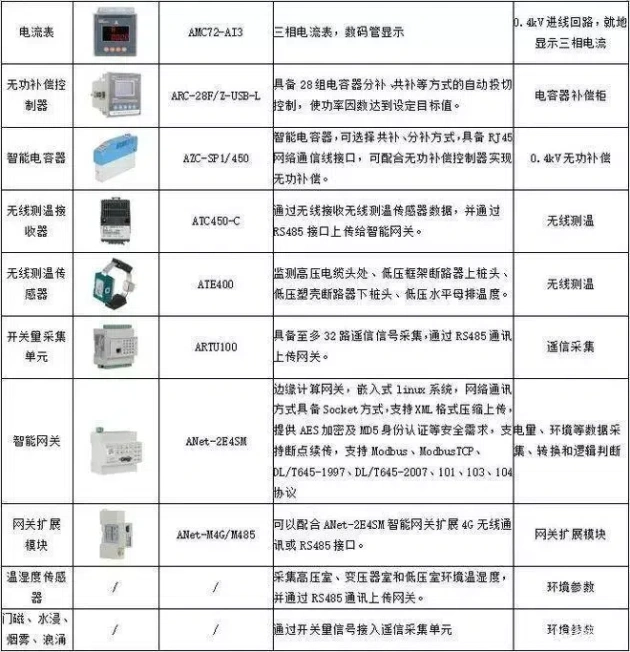
9.3. Intelligent Gateway and Platform
In view of the fact that Weilai has established the operation and maintenance management platform for charging and replacing power stations, the box transformer data in this project has passed.ANet-2E4SM intelligent gateway for acquisition., and upload to the platform according to the data format specified by Weilai Transportation Management Platform. The intelligent gateway has built-in embedded system, which integrates many functions such as local data acquisition, logical judgment, protocol conversion, breakpoint continuation, data encryption and protocol customization, ensuring seamless docking with the superior platform.
Ankerui Acrelcloud-1000The power operation and maintenance platform can also meet the operation and maintenance management requirements of box transformers.. The platform can access thousands of users’ substation data. The data it collects covers the electrical parameters and environmental information of the substation, such as current, voltage, power, switch state, transformer temperature, environmental temperature and humidity, water immersion, smoke concentration, video monitoring and access control system. Once an abnormal situation occurs, the platform can send an alarm signal through SMS and mobile application within 10 seconds. In addition, the platform also supports sending tasks to operation and maintenance personnel through mobile applications, and tracking the implementation of tasks by Beidou positioning system to realize closed-loop management, thus improving operation and maintenance efficiency and ensuring that potential defects are discovered and handled in time.
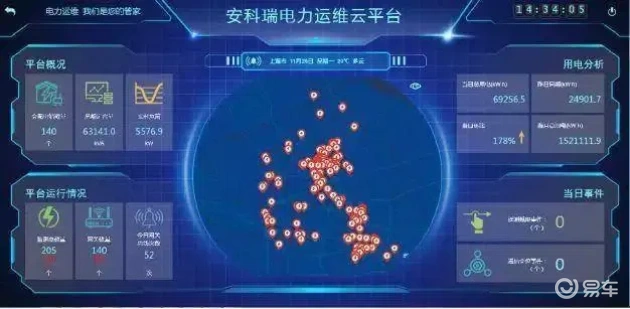
9.3.1 Electric Power Detection
The operation and maintenance platform collects the data of box transformer and distribution system through 4G network, including current, voltage, power, electric energy and switch state, and grasps the real-time and historical data of box transformer.
9.3.2 Electric Energy Statistics
Based on the time-sharing power of Peak Pinggu, the power consumption and electricity cost in different periods are counted, and daily, monthly and annual reports are formed. Through year-on-year analysis and comparison, it is convenient for users to calculate operating costs.
9.3.3 Abnormal alarm
Box transformer current, voltage, power, switch state, transformer load rate and winding temperature, electrical contact temperature, environmental temperature and humidity, smoke, immersion, video, access control information, and alarm information will be sent to the operation and maintenance personnel through APP and SMS in case of abnormal situation.
9.3.4 Operation and Maintenance Management
It can help users to make inspection plans, record the defects found in inspection, distribute work orders to eliminate defects, check the inspection trajectory positioning and repair progress, feedback the task progress, etc., and close the operation and maintenance management process.
9.3.5 User reports
The operation and maintenance platform automatically generates a diagnosis report on the power consumption and operation of users, provides periodic diagnosis reports on the operation of the distribution system, summarizes the problems existing in the distribution system, and puts forward suggestions for improvement.